Julian Lazard, a dedicated nature lover and bird enthusiast, continues his journey on the remote Kerguelen Islands. In this part, he shares the thrilling experiences of his arrival and the unique challenges of living and working in isolation while observing the island’s remarkable wildlife.
Authorized Landing
6:00, wake up. It’s time to eat breakfast and wrap our bags, it’s time for the first helicopter rotations for drop off on the island. There is no real port suitable for such large boats in Kerguelen. It will be a baptism of the air for most of us and this arrival sets the tone for the year ahead.
You jump into the helicopter, and off you go. Taking off from the deck of the boat is a breathtaking experience. Two intense minutes where we fly over the bay, then the base of Port-aux-Français, before a landing as fast as exciting.
And here we are, the first step on Kerguelen. Upon our arrival, all the people already on the island warmly welcome us, their smiling faces making us immediately comfortable. Yet we have little time to savour this moment, because a busy schedule awaits us.
Our predecessors take us under their wing and explain the operation of the base. They show us our work schedule, the equipment to be used, and present us to the different members of the various departments. Everything is moving very fast, perhaps too fast. You have to relearn everything when you are dropped off in a small isolated community that already worked very well without us. The first hours are a whirlwind of information and new encounters. It will take me two weeks to fully understand the role of everyone on the base, to integrate myself and find my place in this new environment.
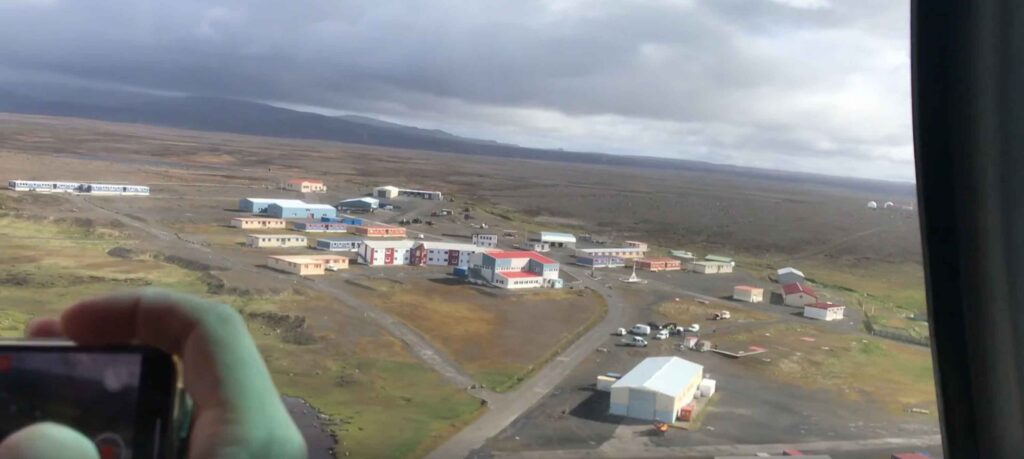
After a month of intense training, our predecessors are taking off for a return to France. Powerful bonds have been forged during this month of transition and saying goodbye is never easy. As when we arrived, everyone gathers in front of the place where the helicopter is dropped off, but this time, smiles have left place to sad faces and a general melancholy.
These are only “goodbye”, but here everything is lived more intensely. Warm hugs, frank handshakes and tears of sadness accompany our friends on departure. These farewell moments are marked by deep emotion, where every gesture and every look say a lot about the ties that unite us.
It is now up to us to take control of the work to be done in this corner of the globe, isolated from the world. It is up to us to know how to get rid of the constraints of isolation and to succeed in living with a kindness more than necessary. Because here, we share our daily lives with forty people for a whole year, and every day is a new opportunity to strengthen the ties that unite us.
First dance
So much has happened this year. So many memories engraved in my memory, unforgettable moments of observation and interactions with local wildlife. I have been lucky enough to live in a rich but sometimes cruel territory every day: the world of the wild, the real.
During this year, I was able to complete many missions that have marked me forever. Counting bird colonies such as the Gentoo Penguin, Southern Rockhopper Penguin, Kelp Gull and Kerguelen Shag was a unique experience. Assessing reproductive success, understanding how each colony is doing, and whether the chicks survive through the year or not, then following the evolutionary trend over time; this has been both exciting and poignant.
I also had the chance to band White-chinned Petrels, Snowy Albatrosses and many other species as part of scientific monitoring. Each bird-related mission has pushed me and my comrades to go further on the island, our backpacks filled with hope and determination. We sailed from cabin to cabin, discovering at each step a little more of the wild and preserved beauty of this unique territory.
Some moments are more important than others, and it is true that I had a strong desire to observe the parade of Snowy Albatross in their natural habitat. Make me small, avoid the slightest disturbance and see these forces of nature evolve serenely before me. I share the desire that many naturalists or photographers may have: to become one with nature.
We are in February and the parade of Snowy Albatrosses have already advanced. Most couples are already formed and the prospect of seeing a parade is diminishing as the days go by. My job requires me to be on areas where this species does not come to nest. Until then, I lived these moments through the stories and photos of my comrades.
A hint of disappointment is coming from me, obviously. But I am so happy for my friends that seeing their photos brings me an immense joy very quickly. These images give me hope, and I dream of the day when I too will witness this magical event. One of the last chances is when I have to go to an area of the island where Albatross nests are tracked. I am informed that the adults are already incubating and that the chances of seeing a parade seem low. Nevertheless, these are the first Albatross on a nest I will see. I am more than excited about this!

February is summer in the southern hemisphere, and the sun reminds us of that. When the wind is not present, which is very rare, we can feel the strong rays that warm our souls, accustomed for a few months to strong gusts and cool temperatures. These moments of calm and warmth are precious gifts, moments of sweetness that contrast with the usual harshness of this wild landscape.
We arrive at the “Pointe Morne”, in the east of the island, a flat area on the coast where the vegetation and its beaches are home to almost all the breeding species of the island. An area that is very popular among scientists, including myself.
The hut, although very wet, offers all the comfort we often need after a few hours of walking to access it. We put down our bags, nibble on a piece and start preparing the necessary equipment for work. The objective of the day is to count the young chicks in the various colonies of Kerguelen Shag around.
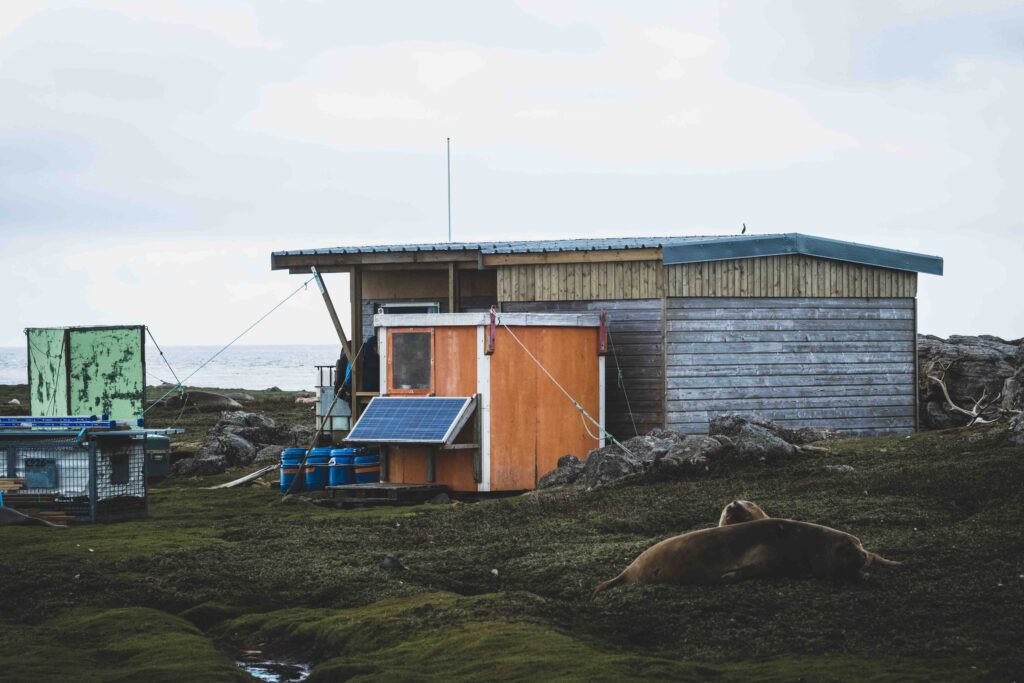
I particularly enjoy coming here because it takes no more than four hours to walk there, and my work on site usually takes no more than a few hours. This often gives me some time for myself, a rare commodity here in Kerguelen. I can walk, observe wildlife, take pictures and marvel at what nature offers me. And that’s what I intend to do today!
After evaluating the breeding success of my three Cormorant colonies and capturing some nice shots, I return with my comrades to the hut. We take the time to stop to observe the Gentoo Penguin and the few Albatrosses that are in the area. We avoid the Tussock (plant formation between 40 and 60 cm high that is found in some peatlands or peaty wetlands), where could hide nests of giant petrels not to scare them.
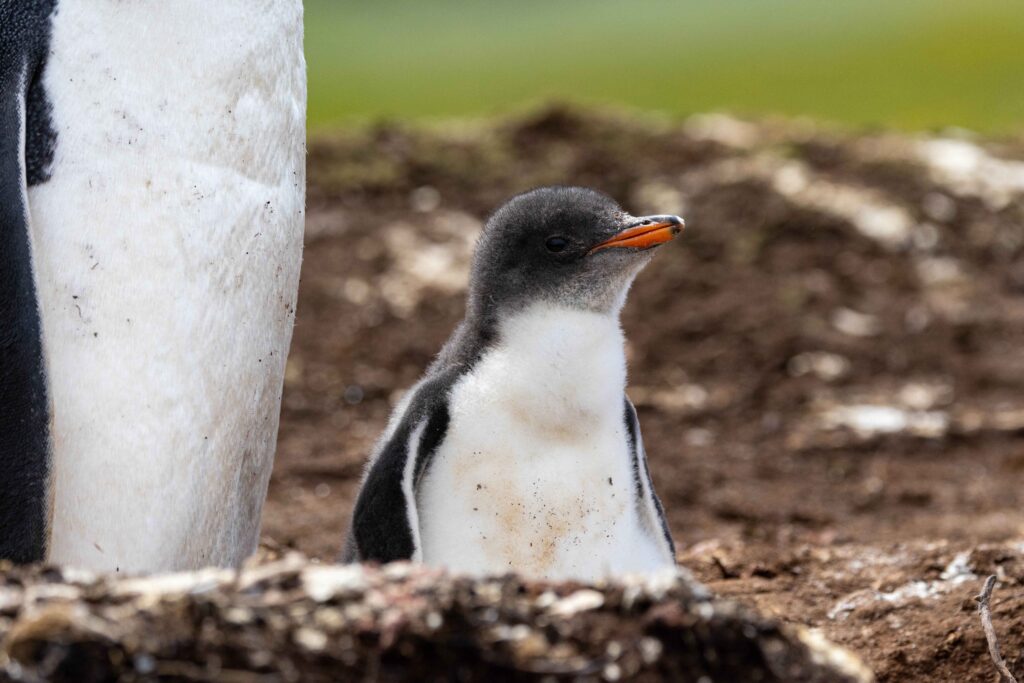
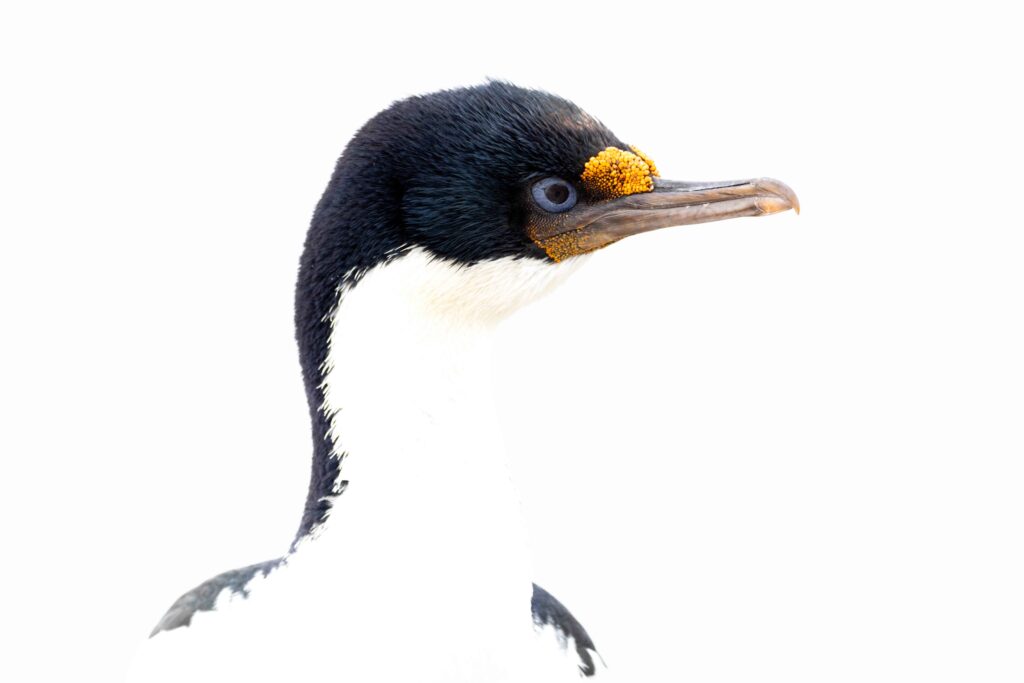
The day continues pleasantly, when in the distance, a group of four Albatross howlers attracts my attention. We are getting closer, but keep a good distance to avoid interfering with their behavior. Two albatrosses are elongated, probably females because of their brownish plumage, while the other two, males, appear simply there, haggard, as if they were waiting for something. They look at each other, and two couples seem to be drawing. Suddenly, a first individual stands up, and the one standing next to him stands up, looking proud. They contemplate each other, the female seems to observe the slightest feather protruding from a plumage yet impeccable. The second couple does the same; their beaks rub, they look left and right, perfectly coordinated. Then, suddenly, the male drops his head with vivacity before raising it several times in a row. I begin to understand what is happening.
Suddenly, one of the two males opens its wings wide and exposes its chest to the female, who does not lose a crumb. She examines him and turns around him, while the latter tries to stay well in front of her, wings spread. They look like star dancers in fifth position. Despite their large size and impressive span, this ballet remains graceful, soft and poetic.
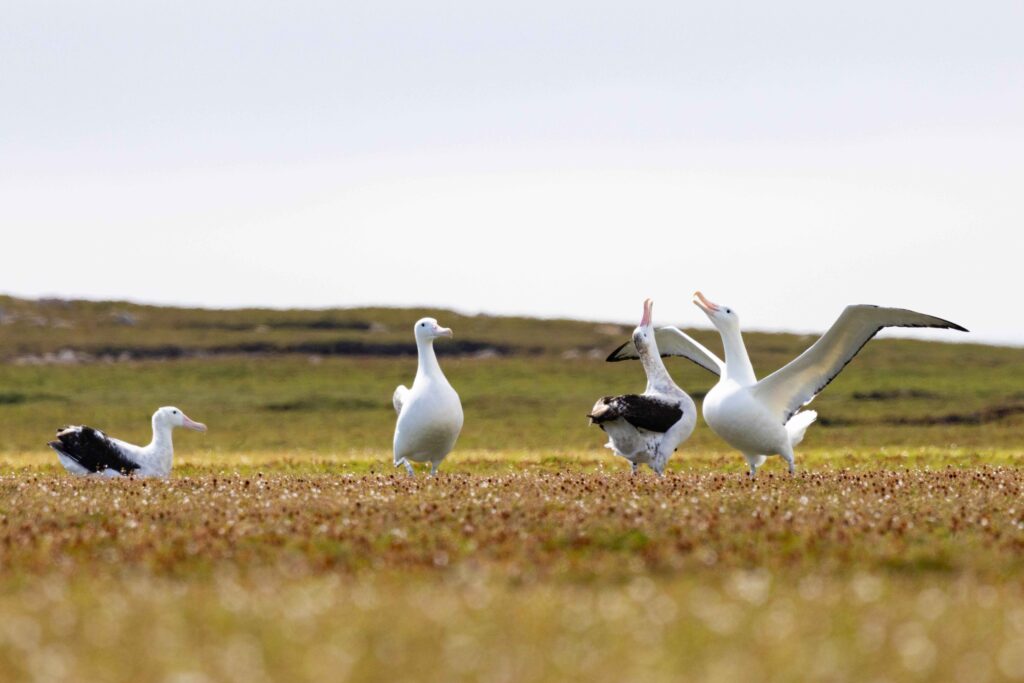
It is with wonder that I finally attend the parade of the Snowy Albatross. A fifth individual lands next to them, which seems to stimulate the other couple who starts parading in turn. The fifth individual also starts to spread his wings, more by imitation. The female barely looks at him. Considering his brownish plumage, it must be a young man who tries the sweet serenade to charm his beauty.

Each movement is a symphony of grace and precision, a natural spectacle that captivates and moves. The dancing of the Snowy albatross is a moment of pure magic, where nature reveals all its splendor and complexity.
The parade continues for a few minutes before the males, perhaps tired, finally sit down. I do not know if they are young individuals who also tried brilliantly at the rough stage of the courtship parade or couples arrived late. But that moment left me and my comrades speechless for a few moments.
We talk about it again on the way back, all confused and amazed by this spectacle they have offered us today. It is with great emotion that today I still think back to this magical moment, cut off from time. It will finally be the only real parade of Snowy Albatross I’ll see. But what does it matter, so intense and unforgettable was this moment!
This is also what makes Kerguelen strong. These thousands of small moments of all kinds that mark us to the flesh. They remain with us, even months later. According to the old winterers, this experience marks us for life. And it is true that even today, I do not spend a day without thinking of my life companions and the extraordinary wild nature that surrounded me during these fourteen months. Every memory is a treasure, every moment a precious gift that continues to resonate in me. I secretly hope to have the chance to go back again, but for now, I just share these small moments of everyday life there, so extraordinary here.
